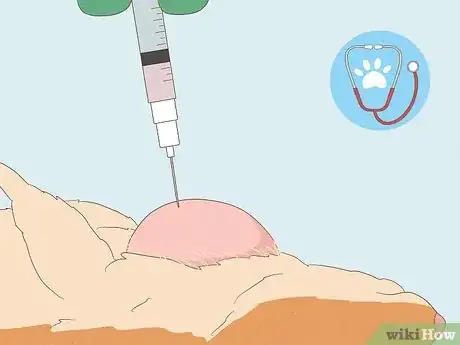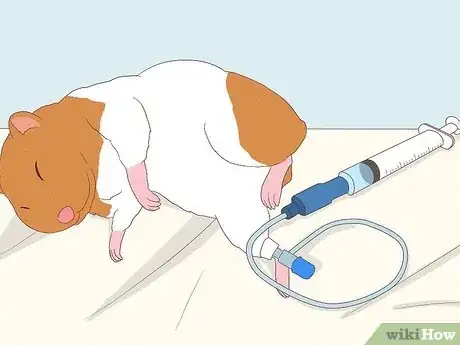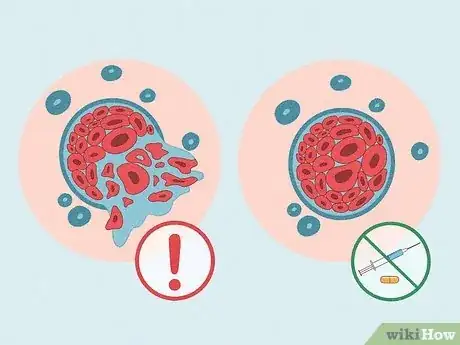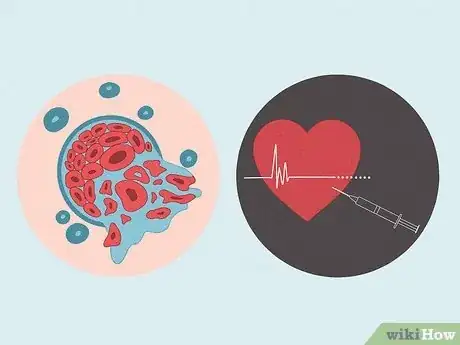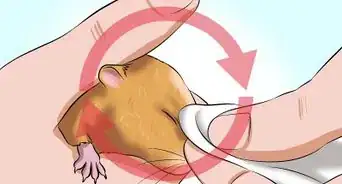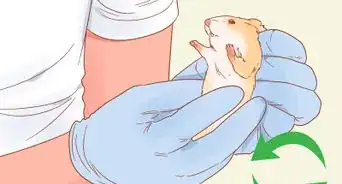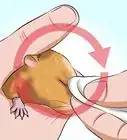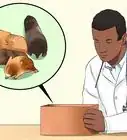This article was co-authored by Lauren Baker, DVM, PhD and by wikiHow staff writer, Amber Crain. Dr. Lauren Baker is a Veterinarian and Assistant Scientist at the University of Wisconsin-Madison. With over 10 years in veterinary medicine, she specializes in the concept of “one health,” which uses insights from veterinary medicine to help human medical research. She holds a Ph.D. in Comparative Biomedical Sciences, a Doctor of Veterinary Medicine, an MS in Comparative Biomedical Sciences, and a Bachelor’s degree in Psychology from the University of Wisconsin-Madison.
This article has been viewed 49,483 times.
Have you recently noticed a tumor on your hamster's body? Tumors are a common health problem in hamsters, especially as they get older, but they are treatable in many cases. In this article, we'll walk you through everything you need to know about different tumors and treatment options so you can make the best choice for your pet. Read on for our complete guide on treating tumors in hamsters.
Things You Should Know
- Tumors are common in older hamsters. Alongside a tumor, you may find blood, discharge, or bald patches in the area.
- If the tumor is cancerous, talk to your vet about different options such as surgery, chemotherapy, and radiation treatments.
- If the tumor is benign and not impeding any vital organs, you may not need to treat it at all.
Steps
References
- ↑ http://vetbase.co.uk/information/cancer-hamsters.php
- ↑ http://vetbase.co.uk/information/cancer-hamsters.php
- ↑ http://www.merckvetmanual.com/pethealth/exotic_pets/hamsters/disorders_and_diseases_of_hamsters.html#v3228024
- ↑ http://vetbase.co.uk/information/cancer-hamsters.php
- ↑ http://vetbase.co.uk/information/cancer-hamsters.php
- ↑ https://www.vmc.umn.edu/about-us/specialties-services/oncology-radiation
- ↑ http://vetbase.co.uk/information/cancer-hamsters.php
- ↑ http://vetbase.co.uk/information/cancer-hamsters.php
- ↑ https://www.rspca.org.uk/adviceandwelfare/pets/rodents/hamsters/health
About This Article
With an early diagnosis and treatment, your hamster will have the best chance of recovering from a tumor. Schedule a visit with your vet so you can discuss treatment options. Surgery is the most common option, which involves making a small incision at the site of the tumor and carefully removing it. If the tumor is large or it’s located in an awkward spot, chemotherapy and radiotherapy may be better alternatives. Chemotherapy works by using medication to fight the cancer cells in your hamster, while radiotherapy uses laser radiation to target the cancer cells. However, because hamsters are so small, these treatments can sometimes be ineffective. Your vet will inform you of the risks and benefits specific to your hamster. For more advice from our Veterinary co-author, including how to care for your hamster after surgery, read on.

